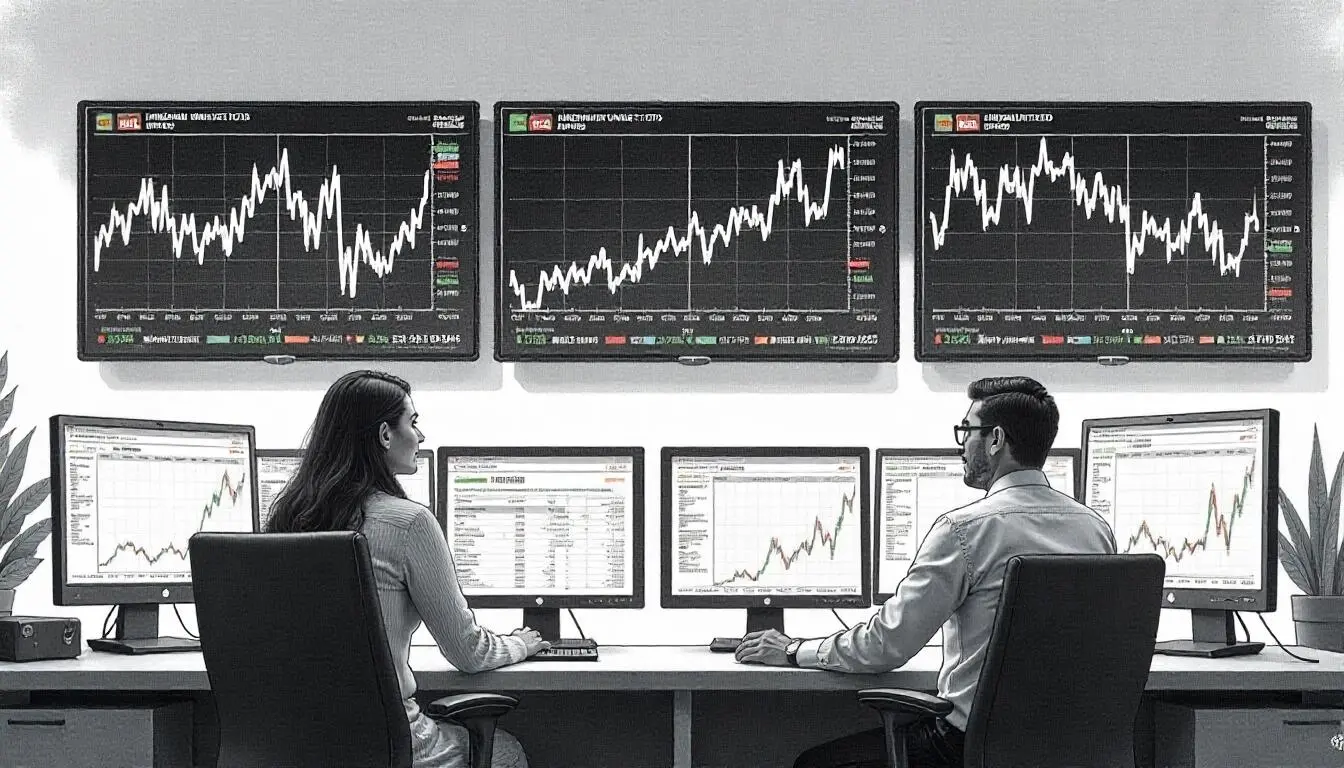Hindustan Unilever Ltd. (HUL) is one of India’s largest and most respected consumer goods companies, known for its robust portfolio of popular brands across personal care, food, home care, and refreshment sectors.
As a prominent part of the Indian stock market and a key player in the Nifty 50 index, HUL is a favorite among investors looking for consistent returns and low volatility.
In this article, we provide an in-depth analysis of HUL’s share price performance, potential price targets, and technical indicators for investors aiming to make informed decisions.
Key Information about Hindustan Unilever Ltd. (HUL)
| Attribute | Details |
|---|---|
| Market Capitalization | ₹6,00,000+ Crore (as of 2024) |
| Industry | FMCG (Fast-Moving Consumer Goods) |
| Key Brands | Dove, Surf Excel, Lifebuoy, Brooke Bond, Vaseline, Knorr, and more |
| NSE Symbol | HINDUNILVR |
| BSE Code | 500696 |
Current Share Price and Historical Performance
Current Share Price
The current share price of Hindustan Unilever Ltd. fluctuates daily based on market conditions, news, and investor sentiment. As of the latest data (2024), HUL’s share price on the NSE and BSE is around ₹2,500 to ₹2,700 per share.
This price is subject to market changes, and investors are advised to monitor it frequently for the most up-to-date information.
Check the Latest Price: HUL Share Price – NSE India | HUL Share Price – BSE India
Historical Performance
Over the past five years, HUL has shown steady growth, making it an attractive stock for long-term investors.
The company has benefitted from consistent revenue and profit growth, driven by strong brand equity, a vast distribution network, and ongoing innovation in its product lines.
| Year | Share Price Start (₹) | Share Price End (₹) | Annual Growth (%) |
|---|---|---|---|
| 2020 | 1,850 | 2,300 | 24.3% |
| 2021 | 2,300 | 2,500 | 8.7% |
| 2022 | 2,500 | 2,800 | 12% |
| 2023 | 2,800 | 2,900 | 3.5% |
| 2024 (YTD) | 2,900 | 2,700 | -6.9% |
Dividend Yield and Consistency
HUL has a strong track record of distributing dividends, making it a preferred stock for investors seeking both capital appreciation and income.
| Year | Dividend per Share (₹) | Dividend Yield (%) |
|---|---|---|
| 2020 | 28 | 1.5% |
| 2021 | 34 | 1.7% |
| 2022 | 37 | 1.8% |
| 2023 | 40 | 1.85% |
| 2024 | 42 | 1.9% |
Share Price Target for Hindustan Unilever Ltd.
Several analysts forecast HUL’s share price target based on the company’s financial health, industry trends, and market sentiment. While each analyst’s view may differ, here’s a general outlook on HUL’s potential stock price for the upcoming years:
| Analyst | 2024 Target Price (₹) | 2025 Target Price (₹) | Investment Outlook |
|---|---|---|---|
| Motilal Oswal | 2,950 | 3,100 | Positive |
| HDFC Securities | 2,880 | 3,000 | Neutral |
| ICICI Direct | 3,000 | 3,200 | Positive |
| Axis Direct | 2,850 | 3,050 | Neutral |
| Goldman Sachs | 3,100 | 3,300 | Positive |
Note: Price targets are subject to change based on market dynamics and other influencing factors. Investors should regularly consult professional analysts for updated targets.
Fundamental Analysis of Hindustan Unilever Ltd.
Revenue and Earnings Growth
HUL has demonstrated consistent revenue growth, driven by its diversified product portfolio and steady consumer demand across its brands.
In FY 2024, the company reported a revenue increase of 8% year-over-year, reflecting its effective cost management strategies and innovation in product offerings.
| Metric | FY 2022 (₹ Crore) | FY 2023 (₹ Crore) | FY 2024 (₹ Crore) |
|---|---|---|---|
| Revenue | 52,000 | 56,160 | 60,650 |
| Operating Profit | 12,500 | 13,800 | 15,200 |
| Net Profit | 7,200 | 7,600 | 8,500 |
| Earnings per Share | 26.2 | 28.1 | 30.9 |
Valuation Ratios
| Ratio | FY 2023 | FY 2024 |
|---|---|---|
| Price-to-Earnings (P/E) | 87.1x | 86.4x |
| Price-to-Book (P/B) | 9.2x | 8.9x |
| Dividend Yield | 1.9% | 1.8% |
Technical Analysis of HUL
Key Technical Indicators
Analyzing HUL’s stock using technical indicators helps provide a short-term and long-term perspective on price movements.
| Indicator | Current Value | Signal |
|---|---|---|
| 50-Day Moving Average | ₹2,720 | Neutral |
| 200-Day Moving Average | ₹2,840 | Bearish |
| Relative Strength Index (RSI) | 45 | Neutral |
| MACD | Slightly negative | Bearish |
| Bollinger Bands | Consolidation | Neutral |
Trend Analysis
- Short-Term: HUL has been trading within a consolidation range between ₹2,600 and ₹2,800, indicating indecision among investors. The stock is below its 200-day moving average, suggesting limited bullish momentum.
- Medium-Term: With the MACD showing a slightly negative trend, HUL’s stock may see further consolidation or mild bearishness. However, it holds significant support near ₹2,500, which may limit downside risks.
Support and Resistance Levels
| Level | Price (₹) |
|---|---|
| Immediate Support | 2,500 |
| Next Support | 2,450 |
| Immediate Resistance | 2,850 |
| Next Resistance | 3,000 |
Market Sentiment and Analyst Recommendations
Market sentiment around HUL stock remains positive given its solid fundamentals, brand strength, and dividend policy. The FMCG sector has shown resilience during economic fluctuations, making HUL a favored stock among long-term investors.
Recent Analyst Ratings
- Motilal Oswal: Buy (Target ₹3,100)
- HDFC Securities: Hold (Target ₹2,880)
- ICICI Direct: Buy (Target ₹3,200)
- Goldman Sachs: Buy (Target ₹3,300)
Is HUL a Good Investment?
Pros of Investing in HUL
- Strong Brand Portfolio: With iconic brands, HUL is deeply ingrained in the Indian market.
- Dividend Consistency: The company’s reliable dividend payments appeal to income-focused investors.
- Resilience: FMCG stocks like HUL tend to perform well, even during economic downturns.
- Growth Potential: HUL’s focus on innovation and market expansion could lead to growth in both revenue and profit.
Cons of Investing in HUL
- High Valuation: A P/E ratio above 85 may indicate that the stock is overvalued, limiting upside potential.
- Sector Competition: Intense competition from peers like ITC, Dabur, and Nestlé could impact market share.
Conclusion
Hindustan Unilever Ltd. remains a solid investment for those interested in the stability and steady growth of FMCG stocks.




